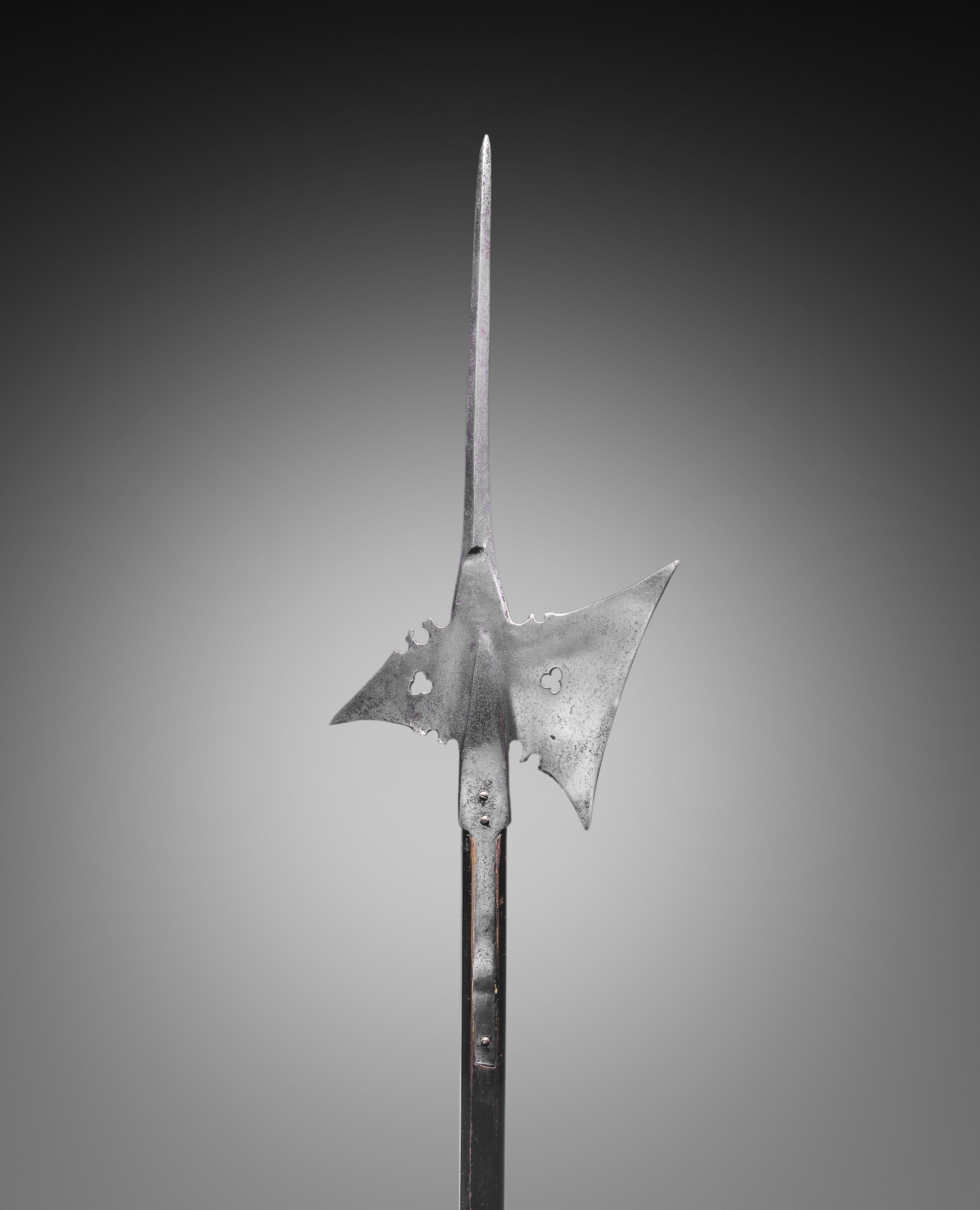The Cleveland Museum of Art
Collection Online as of April 21, 2024

Halberd
c. 1550
Overall: 200.7 cm (79 in.); Blade: 25.4 cm (10 in.)
Gift of Mr. and Mrs. John L. Severance 1916.1542
Location: 210A Armor Court
Did You Know?
The lives of both Leopold III, Duke of Austria, and Charles the Bold, Duke of Burgundy, were ended by a halberd strike.Description
The most effecient weapons used by the infantry (foot soldiers) during the 15th and 16th centuries were pole arms (or staff weapons). The halberd, like the examples shown here, was a weapon of great versatility. The word halberd comes from the German words Halm (a staff) and Barte (an axe). The halberd is, in fact, an axe mounted on a long pole with a very specialized shape and function: the axe blade was used for hacking, the spike for thrusting, and the beak either for piercing plate armor or for pulling a knight from his saddle. Used by shock troops, the halberd was the weapon of choice for Swiss and German mercenaries. From about 1550 onward, the halberd underwent major changes. Its distinctive outline became exaggerated and its functional elements evolved into purely ornamental shapes. The halberd's large blade conveniently provided space for armorial devices. By the late 1500s, it became a ceremonial weapon favored by princely body guards. It is still carried today by the Swiss Guard at the Vatican.- Frank Gair Mcomber; Boston; cat. #66.
- Catalogue of Arms and Armour. Vol. 2, 16th century. [Boston, Massachusetts]: [Frank Gair Macomber], [1900-1915]. Mentioned and Reproduced: No. (66) 71 archive.orgGilchrist, Helen Ives. A Catalogue of the Collection of Arms & Armor Presented to the Cleveland Museum of Art by Mr. and Mrs. John Long Severance; 1916-1923. Cleveland: The Cleveland Museum of Art, 1924. Mentioned: p. 190, H31 archive.org
- Armor Court Reinstallation. The Cleveland Museum of Art (organizer).The Cleveland Museum of Art (09/10/1998); "Armor Court Reinstallation"
- {{cite web|title=Halberd|url=false|author=|year=c. 1550|access-date=21 April 2024|publisher=Cleveland Museum of Art}}
Source URL:
https://www.clevelandart.org/art/1916.1542